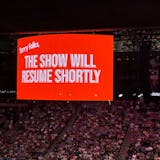The growing risk of unreliability and potential expense of buying energy on the open market is a big reason why Xcel Energy wants to make significant investments in its infrastructure.
The issue was underscored last month when the head of the regional electricity grid said there are “material, adverse challenges” in meeting energy needs during peak times, especially with severe storms becoming more frequent and intense.
In other words, Minnesotans need to rely on their own energy sources as much as possible, Xcel says.
“On those coldest hours of the year, when it is an emergency situation, we want our resources to be available to serve our customers,” said Bria Shea, regional vice president of regulatory policy for Xcel, during a Minnesota House hearing in late February.
That prediction has drawn some questions, including from clean energy developers who say sharing resources through the Midcontinent Independent System Operator (MISO) results in cheaper energy and that Xcel has financial incentive to have more of its own power sources. But last month MISO called for action to reduce the risk of outages in its 15-state area.
More severe weather, supply chain issues and slow construction of renewable power to replace retiring coal plants are just some of the challenges facing the regional grid.
“The transition that is underway to get to a decarbonized end state is posing material, adverse challenges to electric reliability,” wrote MISO CEO John Bear in the latest update of a report titled “The Reliability Imperative.”
Xcel modeling suggests go-alone plan
Xcel in early February filed its 15-year blueprint for electricity plans with the state Public Utilities Commission (PUC), outlining what types of energy sources it will need for the company to exit coal generation by 2030 and reach a carbon-free system in Minnesota by 2040. The plan includes extending the life of its two nuclear plants and building a pair of natural gas facilities and a boatload of new wind, solar and battery power.



